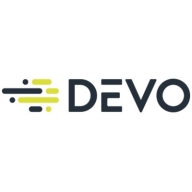

Dynatrace and Devo are two competing products for tech buyers. Dynatrace is seen as having an edge in support, customer service, and pricing, while Devo is favored for its feature set and perceived value.
Features: Dynatrace offers full-stack monitoring, automatic root cause analysis, and AI-powered anomaly detection. Devo provides real-time data analytics, scalability, and customizable dashboards.
Room for Improvement: Dynatrace needs better integration with third-party tools, more flexible licensing options, and enhanced customization. Devo requires improved documentation, enhanced alerting capabilities, and a refined user interface.
Ease of Deployment and Customer Service: Dynatrace users report a smooth deployment process and highly commendable customer service. Devo users find deployment to be straightforward but need more hands-on support.
Pricing and ROI: Dynatrace is considered cost-effective with substantial ROI, although initial setup costs can be high. Devo is more expensive but justified by its feature set and potential ROI.
| Product | Market Share (%) |
|---|---|
| Dynatrace | 4.9% |
| Devo | 0.7% |
| Other | 94.4% |


| Company Size | Count |
|---|---|
| Small Business | 7 |
| Midsize Enterprise | 4 |
| Large Enterprise | 11 |
| Company Size | Count |
|---|---|
| Small Business | 77 |
| Midsize Enterprise | 50 |
| Large Enterprise | 289 |
Devo is the only cloud-native logging and security analytics platform that releases the full potential of all your data to empower bold, confident action when it matters most. Only the Devo platform delivers the powerful combination of real-time visibility, high-performance analytics, scalability, multitenancy, and low TCO crucial for monitoring and securing business operations as enterprises accelerate their shift to the cloud.
Dynatrace is an AI-powered software intelligence monitoring platform that accelerates digital transformation and simplifies cloud complexities. Dynatrace is an entirely automated full-stack solution that provides data and answers about the performance of your applications and deep insight into every transaction throughout every application, including the end-user experience. By modernizing and automating enterprise cloud operations, users can deliver an optimal digital experience with higher quality software to customers faster.
Dynatrace offers an all-in-one automated artificial intelligence solution that brings together application performance, cloud and infrastructure, and digital experience monitoring. Dynatrace accelerates performance-driven results through operations, development, and business teams with a shared metrics platform. In addition, users are provided a full-stack monitoring experience with three patented technologies:
What does Dynatrace offer?
Dynatrace redefines how organizations monitor their digital ecosystems. The solution offers:
Reviews from Real Users
Dynatrace is the only solution that provides answers to organizations based on deep insight into each user, transaction, and organization's environment.
Barry P., a managing performance engineer at Medica Health Plans, writes, "With Dynatrace, we have synthetic checks and real-user monitoring of all of our websites, places where members and providers can interact with us over the web. We monitor the response times of those with Dynatrace, and it's all integrated into one place."
A consultant at a tech service company notes, "A feature that's one of the highlights of Dynatrace is the AI. The second most valuable feature is OneAgent. Between infrastructures, applications, operating systems, you can deploy with just a single agent and can practically install and forget about it."
We monitor all Log Management reviews to prevent fraudulent reviews and keep review quality high. We do not post reviews by company employees or direct competitors. We validate each review for authenticity via cross-reference with LinkedIn, and personal follow-up with the reviewer when necessary.